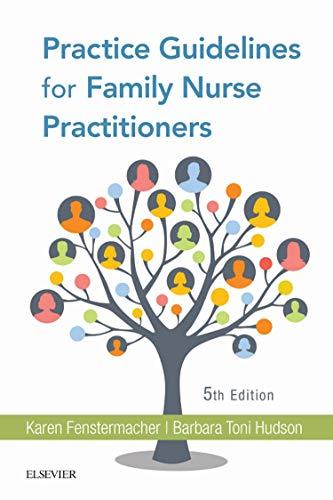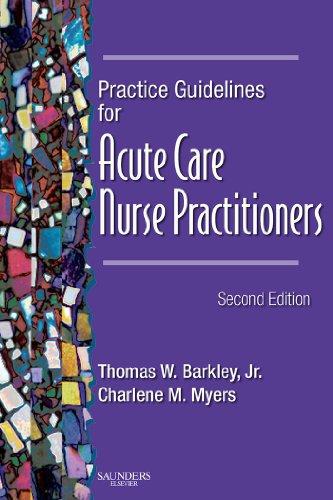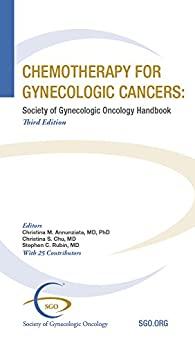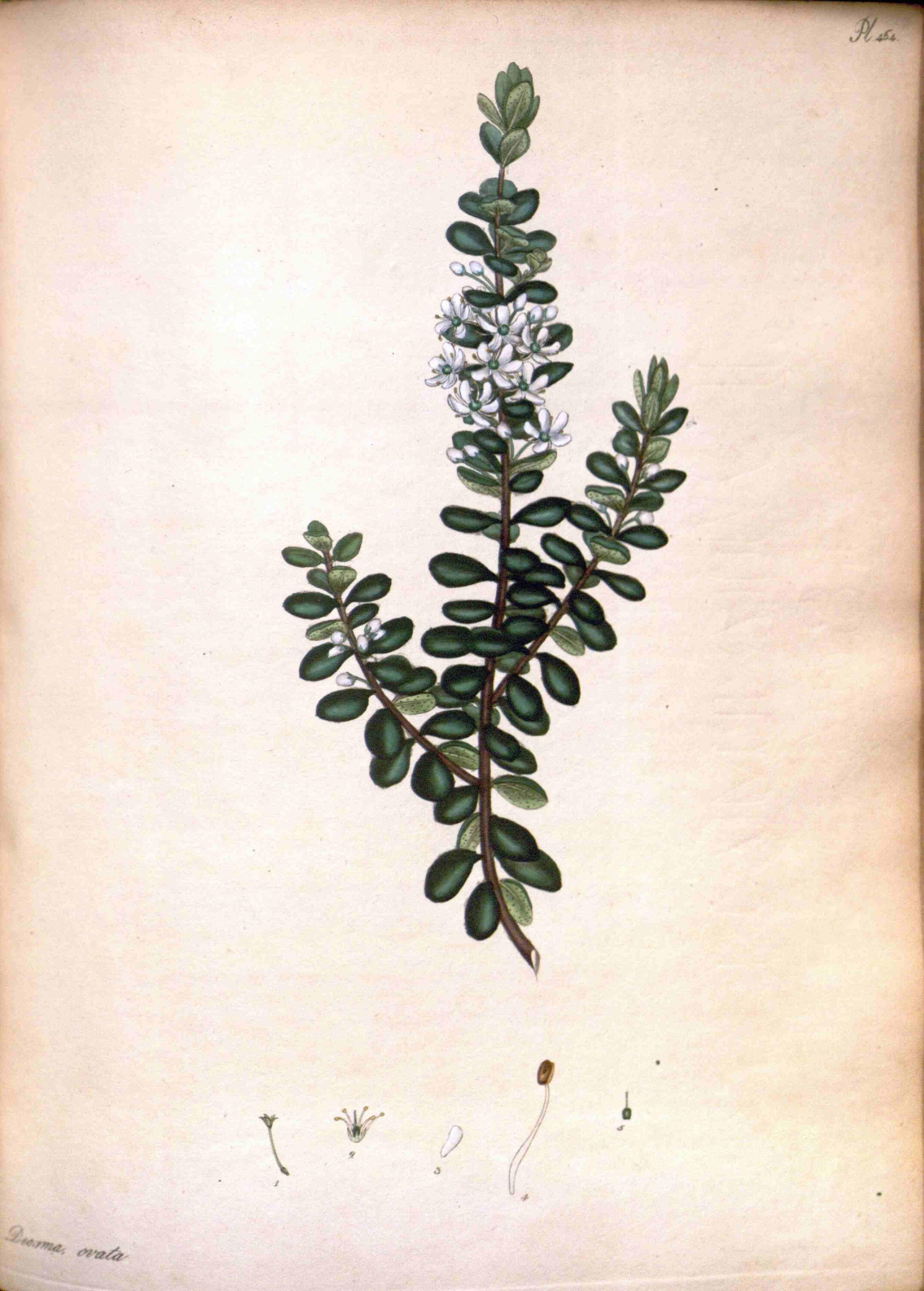Guidelines for Nurse Practitioners in Gynecologic Settings, 11th Edition
https://ebookmass.com/product/guidelines-fornurse-practitioners-in-gynecologic-settings-11thedition/
Download more ebook from https://ebookmass.com
More products digital (pdf, epub, mobi) instant download maybe you interests ...
Guidelines for Nurse Practitioners in Gynecologic Settings, Tenth Edition 10th Edition, (Ebook PDF)
https://ebookmass.com/product/guidelines-for-nurse-practitionersin-gynecologic-settings-tenth-edition-10th-edition-ebook-pdf/
Practice Guidelines for Family Nurse Practitioners E Book 5th Edition, (Ebook PDF)
https://ebookmass.com/product/practice-guidelines-for-familynurse-practitioners-e-book-5th-edition-ebook-pdf/
Practice Guidelines for Acute Care Nurse Practitioners E Book 2nd Edition, (Ebook PDF)
https://ebookmass.com/product/practice-guidelines-for-acute-carenurse-practitioners-e-book-2nd-edition-ebook-pdf/
Chemotherapy for Gynecologic Cancers: Society of Gynecologic Oncology Handbook: Third Edition
https://ebookmass.com/product/chemotherapy-for-gynecologiccancers-society-of-gynecologic-oncology-handbook-third-edition/
Nurse
Practitioners and the Performance of
Professional Competency : Accomplishing Patient-centered Care 1st Edition Staci Defibaugh (Auth.)
https://ebookmass.com/product/nurse-practitioners-and-theperformance-of-professional-competency-accomplishing-patientcentered-care-1st-edition-staci-defibaugh-auth/
Health Promotion in Multicultural Populations: A Handbook for Practitioners
https://ebookmass.com/product/health-promotion-in-multiculturalpopulations-a-handbook-for-practitioners/
Biocatalysis for Practitioners Gonzalo De Gonzalo
https://ebookmass.com/product/biocatalysis-for-practitionersgonzalo-de-gonzalo/
Performing for Motion Capture A Guide for Practitioners
John Dower
https://ebookmass.com/product/performing-for-motion-capture-aguide-for-practitioners-john-dower/
Role Development for the Nurse Practitioner 2nd Edition
https://ebookmass.com/product/role-development-for-the-nursepractitioner-2nd-edition/
19. Polycystic Ovary Syndrome 253
20. Sexual Dysfunction 257
21. Vaginal Conditions 263
Checklist for Vaginal Discharge Workup 264
Checklist for Vaginal Discharge With Odor Workup 268
Bacterial Vaginosis 271
Candidiasis 275
Chancroid 279
Chlamydia trachomatis Infection 282
Condylomata Acuminata (Genital Warts) 286
Genital Herpes Simplex 290
Gonorrhea 295
Granuloma Inguinale 300
Hepatitis 302
HIV/AIDS 306
Lymphogranuloma Venereum 310
Molluscum Contagiosum 313
Syphilis 315
Trichomoniasis 319
PART IV: APPENDICES
PDF versions of the Patient Information and Consent Forms (Appendix A) and the Patient Education Handouts (Appendix I) are available at www.springerpub.com/ hawkins11
APPENDIX A: Patient Information and Consent Forms 325
Diaphragm 326
Emergency Contraception 329
Hormonal Contraceptives 333
Injectable Contraception (Depo-Provera) 337
Intrauterine Device 340
APPENDIX B: Abuse Assessment Screen 343
APPENDIX C: Danger Assessment 345
APPENDIX D: Self-Assessment of HIV Risk 349
APPENDIX E: Women and Heart Disease: Risk Factor Assessment 351
APPENDIX F: Complementary and Alternative Medicine 355
APPENDIX G: Constipation 359
APPENDIX H: Body Mass Conversion Table 363
APPENDIX I: “For Your Information”: Patient Education Handouts 365
Bacterial Vaginosis 367
Candidiasis (Monilia) Yeast Infection 369
Chlamydia trachomatis 371
Contraceptive Implant 373
Contraceptive Patch 376
Contraceptive Shield: Lea’s Shield 379
Contraceptive Vaginal Ring (NuvaRing) 381
Cystitis (Bladder Infection) 383
Femcap 385
Genital Herpes Simplex 387
Genital Warts (Condylomata Acuminata) 389
Gonorrhea 394
Hormone Therapy 396
Lice (Pediculosis) 399
Natural Family Planning to Prevent or Achieve Pregnancy 402
Osteoporosis 413
Polycystic Ovary Syndrome 415
Postabortion Self-Care: Medical or Surgical 417
Preconception Self-Care 419
Premenstrual Syndrome 421
Scabies 423
Spermicides and Condoms 426
Stop Smoking 429
Stress or Urge Incontinence (Loss of Urine) 432
Surgical Postabortion Care 435
Syphilis 437
Trichomoniasis 440
Vaginal Contraceptive Sponge 442
Vaginal Discharge 444
Bibliographies 447
Index 473
Contributors
Heidi Collins Fantasia, PhD, RN, WHNP-BC
Assistant Professor
School of Nursing, University of Massachusetts, Lowell Nurse Practitioner
Health Quarters, Beverly, Massachusetts
Holly B. Fontenot, PhD, RN, WHNP-BC
Assistant Professor
William F. Connell School of Nursing, Boston College
Chestnut Hill, Massachusetts
Allyssa L. Harris, PhD, RN, WHNP-BC
Assistant Professor
William F. Connell School of Nursing, Boston College
Chestnut Hill, Massachusetts
Women’s Health Nurse Practitioner
Health Quarters, Beverly, Massachusetts
Thomas J. Loveless, PhD, MSN, RNP
Clinical Assistant Professor
School of Nursing, Rutgers University
New Brunswick, New Jersey
Adult Nurse Practitioner
Infectious Disease Associates, P.C.
Philadelphia, Pennsylvania
Preface
The 11th edition of Guidelines for Nurse Practitioners in Gynecologic Settings is designed to assist nurse practitioners, nurse midwives, clinical nurse specialists, physician assistants, students preparing for these roles, and other health professionals who care for women across the life span and in community health care settings. The issues about which women may seek care range from common gynecologic concerns, including infections and sexually transmitted diseases (STDs), to navigating life transitions such as fertility control and preparing for pregnancy, to menopause and incontinence. Women also seek care and assistance when they encounter abuse or struggle with weight management; osteoporosis; smoking cessation; stress management; mental health issues; changes in their sexuality, including desire and physical responses with aging; and risks for heart disease, osteoporosis, and breast cancer; as well as the changing information on HIV/AIDS. The clinical guidelines, appendices, and bibliographies for this edition have been extensively revised and rewritten to address these concerns, using best-evidence data from the literature when those data are available. Note: ”STD” is the most commonly used term for the collection of medical infections that are transmitted through sexual contact. However, since the medical community has begun transitioning from “STD” to “STI” (sexually transmitted infection) in an effort to clarify that not all STIs turn into disease, the authors will be using the term “STI” throughout the book. The three principal authors of the guidelines are nurse practitioners who have practiced for decades in women’s health care settings. All were actively involved in the publication of the first edition and have continued to be responsible for updating these guidelines for each edition of the book. Several guidelines were developed or updated by nurse practitioner colleagues who have expertise in particular specialty areas within women’s health care or emerging issues.
This 11th edition has several special features to assist you in your practice, including the following:
• A chapter on well-woman annual examinations, covering special issues in examining and caring for older women
• An enhanced mental health chapter that details an approach to discontinuation of selective serotonin reuptake inhibitors/serotoninnorepinephrine reuptake inhibitors (SSRIs/SNRIs)
• A bibliography for each guideline, plus one or more relevant websites at the end of each chapter
• Guidelines for STIs, vaginitis, and vaginosis that reflect the 2014 Centers for Disease Control and Prevention Sexually Transmitted Diseases Treatment Guidelines
• Guidelines for the management of cytological abnormalities and cervical intraepithelial neoplasia that reflect the recommendations of the 2014 American Society for Colposcopy and Cervical Pathology Consensus Conference (www.asccp.org)
• Information on hormone therapy, menopause, and osteoporosis that reflects evidence-based practice generated through analysis of the emerging data from the Women’s Health Initiative and other studies
• Information on contraception based on research articles and on the 2014 adaptation of the World Health Organization’s Medical Eligibility Criteria for Contraceptive Use
• Information on natural family planning, which has changed significantly, and the revised guidelines, prepared by an expert natural family planning educator, which reflect those changes
Two special features are designed to facilitate clinical use in primary care:
• Spiral binding to ensure these clinical guidelines will lay flat for easy reference
• Availability of the Patient Information and Consent Forms (Appendix A) and the Patient Education Handouts (Appendix I) in PDF format
The four-part organization is as follows:
I. General Guidelines for Women’s Health Care presents six chapters that cover the well-woman exam, safe practices for clinicians, complementary and alternative medicine (CAM) therapies, smoking cessation, weight management, and guidelines for assessing victims of abuse and violence.
II. Guidelines for Contraception and Preconception Care presents two chapters that cover methods of contraception and family planning and preconception care.
III. Guidelines for Managing Women’s Health Conditions presents guidelines on discrete disorders that are grouped into 13 chapters. Within each chapter, the disorders are organized alphabetically for ultimate ease of use.
IV. Appendices present nine invaluable clinical resources, such as screening tools, consent forms, and patient education handouts. The Patient Information and Consent Forms (Appendix A) and the Patient Education Handouts (Appendix I) are available in PDF format at www.springerpub.com/hawkins11.
Our extensive revisions reflect new information for all the guidelines, including contraceptive methods, complementary and alternative medicines, medical abortion, HIV/AIDs, human papillomavirus (HPV) screening, and vaccine recommendations.
Joellen W. Hawkins, PhD, RN, WHNP-BC-E, FAAN, FAANP Diane M. Roberto-Nichols, BS, APRN-C
J. Lynn Stanley-Haney, MA, APRN-C
Part I
Well-Woman
Another random document with no related content on Scribd:
PLATE CCCCLX.
LACHENALIA SESSILIFLORA.
Sessile-flowered Lachenalia.
CLASS VI. ORDER I.
H E X A N D R I A M O N O G Y N I A . Six Chives. One Pointal.
ESSENTIAL GENERIC CHARACTER.
C������ 6-petala, infera; petalis 3 interioribus longioribus: stamina erecta: capsula sub-ovata, trialata: semina globosa.
B������ 6-petaled beneath; the three inner petals the longest: chives erect: capsule nearly egg-shaped, three-winged: seeds globular.
SPECIFIC CHARACTER.
L��������� sessiliflora: foliis geminis, lanceolatis: scapo erecto, semipedali: floribus prope apices confertis, purpureis: petalis exterioribus cuneatis: interioribus duplo longioribus, angustis, truncatis.
L��������� with sessile flowers: leaves by pairs: stem upright, half a foot high: flowers grow crowded together near the top, and are of a purple colour: the outer petals are wedge-shaped: the inner ones twice the length, narrow, and appearing cut off at the end.
REFERENCE TO THE PLATE.
1. A flower spread open.
2 The inside of the same
3. Seed-bud and pointal, summit magnified.
T��� Lachenalia is perfectly new, an attraction that may counterbalance its want of speciosity. From the total absence of footstalks to the flowers we have derived its unoccupied specific title. Professor Jacquin has figured many handsome species of this genus not yet introduced to this country, and amongst the number two equally sessile with our plant, but in no other particular resembling it. From a drawing made for the collection of G. Hibbert, esq. in 1803 our figure was taken; since which period we have not seen any vestige of the plant, and therefore imagine that, like many other Cape bulbs, it is lost to us for the present: but it probably may soon reappear
amongst the frequent importations we are in the constant habit of receiving from that inexhaustible botanic mine.
PLATE CCCCLXI.
PROTEA TERETIFOLIA.
Cylindric-leaved Protea.
CLASS IV. ORDER I.
T E T R A N D R I A M O N O G Y N I A . Four Chives. One Pointal.
ESSENTIAL GENERIC CHARACTER.
C������ 4-fida, seu 4-petala. Antheræ lineares, petalis infra apices insertæ. Calyx proprius, nullus. Sem. solitaria.
B������ four-cleft, or of four petals. Tips linear, inserted into the petals below the points. Cup proper, none. Seeds solitary.
SPECIFIC CHARACTER.
P����� teretifolia, foliis obtusis: junioribus adscendentibus, senioribus patentibus: floribus luteis, capitatis, terminalibus, foliis circumsessis: post florescentiam conus formatur.
P����� with cylindrical leaves blunt-ended: the younger ascending, and the older ones spreading: flowers yellow, headed, terminal, and surrounded by the leaves: and after flowering a cone is formed.
REFERENCE TO THE PLATE.
1. A flower.
2. A chive magnified.
3. Seed-bud and pointal.
4 Flower-branch of a small variety
T��� little Protea is more desirable, by way of contrast to those splendid imbricated species, than for any beauty it possesses, and exhibits powerfully the great diversity of character annexed to this numerous genus. Attached to the dissections is part of the branch of a minor variety, and which is by some considered as specifically distinct: and were extension our object, it certainly might be made a separate species, from the difference of its character after flowering, the larger one forming a cone the size of an egg; which the lesser one does not. It also differs in the manner of its growth; but only in the dried specimens which we have seen that have been collected from old plants at
the Cape; and in them the small variety forms its branches after the manner of a corymbus, and the plant has thence received the appellation of corymbosa. But had we given a separate figure of it, we could not (without making an awkward apology) have adopted a specific title whose characteristic appearance it might never acquire in this climate, and which our figure would not have possessed. By placing it amongst the variations these objections are obviated, and the appearance of repetition avoided: a desirable object in a genus so extended as Protea; and we shall take every opportunity of abbreviating as much as possible the number of slight varieties, particularly when their attractions are not considerable. Our drawing was made from plants in the Hibbertian collection.
PLATE CCCCLXII.
MALUS JAPONICA.
Scarlet-flowering Japan Apple. CLASS XII. ORDER V.
I C O S A N D R I A P E N TA G Y N I A . Twenty Chives. Five Pointals.
GENERIC CHARACTER.
C����. Perianthium monophyllum, concavum, quinquefidum, persistens.
C������. Petala quinque, subrotunda, concava.
S������. Filamenta viginti, subulata, corollâ breviora, calyci inserta. Antheræ simplices.
P��������. Germen inferum. Styli 5. Filum longitudine staminum. Stigmata simplicia.
P����������. Pomum subrotundum, umbilicatum, carnosum, membranaceum: loculis quinquelocularibus.
S�����. Nonnulla oblonga, obtusa, basi acuminata, hinc convexa, inde plana.
E���������. Cup one leaf, hollow, five-parted, and remaining.
B������. Five petals, nearly round, and hollow.
C�����. Twenty, awl-shaped, and shorter than the blossom, and inserted into the cup. Tips simple.
P�������. Seed-bud beneath. Shafts 5. Thread the length of the stamens. Summit simple.
S���-������. An apple nearly round, navelled, fleshy, skinny: partitions five loculaments.
S����. Some oblong, obtuse, pointed at the base, convex on the side, and then flat.
SPECIFIC CHARACTER.
M���� japonica, foliis alternis, lanceolatis et spathulatis, glabris, et lucidis: marginibus serrulatis, suffruticibus, et interdum arborescentibus.
Rami et ramuli alterni, recti, ad basin nodosi, colore schisti: floribus fasciculatis, plerumque quaternis, læte coccineis: petalis concavis, quinque vel decem. Floret in Martio et Aprili.
J���� Apple, with alternate leaves lance-and spathula-shaped, smooth, and shining: with finely sawed margins, shrubbyish, and sometimes growing to a tree. The small and large branches are alternate and straight out, knotty at the base, and of a slaty colour. Flowers grow in bunches mostly of four together, of a bright scarlet colour. The petals are concave, and from five to ten in number. Flowers in March and April.
REFERENCE TO THE PLATE.
1. A petal.
2 The empalement, chives, and pointals
3. The same spread open, one tip magnified.
4. Seed-bud and pointals, summit magnified.
T��� handsome fruit-tree will doubtless soon become an object of general cultivation in this country, from the brilliance and duration of its fine scarlet blossoms. It is perfectly hardy, but flowers with most freedom in the shelter of the green-house. The fruit is about the size and shape of a walnut. Why or wherefore Pyrus is the generic title adopted for Apple we were at first at a loss to conjecture, but upon investigation find it built on the egotism too inseparable from human nature, and must confess ourselves very sorry to be under the necessity of placing the defect to its original source; the celebrated Linnæus, who it appears altered it from Malus (the genus of Tournefort) to Pyrus, for no other reason but that his own system (unquestionably the best in almost every other particular) might not bear any resemblance to that of Tournefort. Jussieu in the Introduction to his Genera Plantarum, commenting on this very subject, concludes with this most excellent remark: “Such is the love of undivided praise!” We have therefore returned the genus back to its old standard, not through any desire to alter, but absolute necessity; regarding the absurdity of its nomination under the generic title of Pyrus as already too long retained; for whilst the tree is known by its fruit, that fruit should certainly be called by its name.
For the introduction of this fine plant we are indebted to the Hon. C. Greville, in whose conservatory at Paddington it first flowered, and from whence our figure was taken.
PLATE CCCCLXIII.
PÆONIA PAPAVERACEA.
Poppy-like Pæony.
CLASS XIII. ORDER VI.
P O L YA N D R I A H E X A G Y N I A . Many Chives. Six Pointals.
ESSENTIAL GENERIC CHARACTER.
C���� 5-phyllus. Petala 5. Styli 0. Capsulæ polyspermæ.
C�� 5-leaved. Petals 5. Pointal none. Capsules many-seeded.
SPECIFIC CHARACTER.
P����� caule suffruticoso ramoso: folia alternatim bipinnata, subtus glauca: petiolis longis, canaliculatis, amplexicaulibus: floribus semiduplicibus, albis, ad basin eleganter purpureo radiatis: capsula orbiculata, continens sex loculamenta, in quibus singulis sunt duo semina.
P���� with a shrubby stem branching beneath: leaves alternately twowinged, and glaucous beneath, with long footstalks, channelled, and embracing the stem. Flowers semi-double, white, but elegantly radiated at the base with a purple colour: capsule orbicular, containing six cells, with two seeds in each.
REFERENCE TO THE PLATE.
1. The seed-vessel.
2 The same cut transversely F�� this beautiful species of Pæonia we are indebted to Lady Hume, in whose select collection at Wormley-bury, Herts, it flowered for the first time in this country. When we figured the fine purple variety, we little thought of having so soon to compare it with a rival of such magnitude, and of equal beauty. The bright radiated purple at the base is a great relief to the surrounding whiteness of the petals, that would otherwise stand in much greater need of the assistance of art for a strength of shadow, that would unavoidably injure their delicacy. The more we become acquainted with this attractive genus, the greater latitude of growth we find attached to it, which appears to defy all systematic rule, varying in some species from Digynia, or
two pointals, up to six or more. The present one differs more than all the rest, having six pointals and seed-buds attached together, and enshrined within a globular exterior, resembling a Poppy, and from whence we have drawn its specific title; for, as a distinct species it may certainly be considered with great propriety; and most likely the distinction will by some be thought of sufficient consequence to license a generic division: but in a genus so mutable, were the alteration still greater, whilst it could be recognised as a Pæony, we should regret to meet it under any other title.
PLATE CCCCLXIV.
DIOSMA OVATA.
Oval-leaved Diosma.
CLASS V. ORDER I.
P E N TA N D R I A M O N O G Y N I A . Five Chives. One Pointal.
ESSENTIAL GENERIC CHARACTER.
C������ 5-petala. Nectaria 5 supra germen. Caps. 3. s. 5, coalitæ. Semina tecta.
B������. Five petals. Five nectaries above the seed-bud. Seed-vessels 3 or 5, joined together. Seeds covered.
SPECIFIC CHARACTER.
D����� ovata, foliis alternis, oppositis, odoris, supra glabris, infra punctatis, patentibus: floribus plerumque duobus, axillaribus, in medio ramulorum, albis. Caulis erectus: ramis simplicibus.
D����� with oval leaves, alternate, opposite, and full of scent, smooth above, dotted beneath, and spreading. Flowers grow mostly two together from the axillæ of the leaves, about the middle of the branches, and are white. Stem upright. Branches simple.
REFERENCE TO THE PLATE.
1. The empalement.
2 Seed-buds, honey-cups, chives, and pointal
3. A petal.
4. A chive magnified.
5. Seed-bud and pointal.
A���� the scented foliage characteristic of so many of the Diosmas the present species is by far the most powerful, and is the plant called Buku, so much used by the Hottentots, at the Cape of Good Hope, by way of perfume. They mix it with grease, and anoint themselves with it so profusely that a stranger can scarcely endure the effluvia of it. The D. serrata also possesses a similar scent, and is most likely used occasionally for the same purpose by the natives. Its scent, when rubbed, remains a long time, and by some is
thought very pleasant, by others as disagreeable: a difference of opinion in general attending all very strong perfumes. The foliage has a very neat appearance, and the clear white flowers give it a lively aspect. Like several others of the genus, it blooms in winter and spring. Our figure was made from the Clapham collection.
PLATE CCCCLXV.
PROTEA DIVARICATA.
Straddling-leaved Protea.
CLASS IV. ORDER I.
T E T R A N D R I A M O N O G Y N I A . Four Chives. One Pointal.
ESSENTIAL GENERIC CHARACTER.
C������ 4-fida, seu 4-petala. Antheræ lineares, petalis infra apices insertæ. Calyx proprius, nullus. Sem. solitaria.
B������ four-cleft, or of four petals. Tips linear, inserted into the petals below the points. Cup proper, none. Seeds solitary.
SPECIFIC CHARACTER.
P����� divaricata, foliis multifidis, longis, linearibus, teretibus, patentibus: floribus glomeratis, luteis.
P����� with straddling leaves, many-cleft, long, linear, round, and spreading. Flowers grow in close round heads of a yellow colour.
REFERENCE TO THE PLATE.
1. A flower.
2. A chive magnified.
3. Seed-bud and pointal.
T��� very distinct species of Protea we have not seen in any other collection than that of G. Hibbert, esq. nor is it as yet amongst the numerous fine dried specimens in the herbarium of A. B. Lambert, esq. and certainly may be considered at present as a rare plant. From the firm luxuriance of the foliage, and woody character of its stem, we should be inclined to regard it as a plant not difficult to preserve; and considering the abundance of its leaves, the flowers are comparatively few: and very likely this circumstance may best account for its present scarcity; for, amongst the various beauties of this extensive tribe, numerous flowers, or speciosity of appearance, are the best recommendations to particular attention.
PLATE CCCCLXVI.
GOODENIA TENELLA.
Slender Goodenia.
CLASS V. ORDER I.
P E N TA N D R I A M O N O G Y N I A . Five Chives. One Pointal.
ESSENTIAL GENERIC CHARACTER.
C������ 5-fida, supra longitudinaliter fissa, genitalia exserens. Stigma urceolatum, ciliatum.
B������ five-cleft, longitudinally cloven on the upper side, exposing the organs of generation. Summit cup-shaped, and fringed.
SPECIFIC CHARACTER.
G������� tenella, foliis prostratis, spathulatis, margine leviter pilosis. Flores plures, germinantes a duabus bracteis oppositis; corollis luteis: petalis duobus superioribus maculatis. Rami graciles, longi, emergentes a radice, terram comprimunt, et postea adscendunt.
G������� with slender stems, prostrate leaves which are spathulashaped, with lightly haired margins. Flowers numerous, branching out from two opposite floral leaves. Blossoms yellow: the two upper petals are spotted. Branches slender, long, and emerging from the root, press the earth, and afterward ascend.
REFERENCE TO THE PLATE.
1. The empalement.
2. A blossom spread open.
3 Seed-bud, chives, and pointal, magnified T��� delicate new Goodenia represents the entire plant, as communicated to the author by the Comtesse de Vandes, in whose choice collection near Bayswater it flowered for the first time. It is certainly one of the most graceful plants hitherto introduced from New South Wales. Its general exterior approaches very near a generic division of Goodenia called Velleia, and is by Labillardiere figured under the title Velleia trinervis. The
abundance and succession of its bright yellow blossom, joined to its light an airy appearance, will no doubt insure it a place in most collections.
PLATE CCCCLXVII.
LYTHRUM FRUTICOSUM.
Shrubby Lythrum. CLASS XII. ORDER I.
D O D E C A N D R I A M O N O G Y N I A . Twelve Chives. One Pointal.
GENERIC CHARACTER.
C����. Perianthium monophyllum, cylindraceum: denticulis duodecim, alternis minoribus.
C������. Petala sex, oblonga, obtusiuscula, patentia: unguibus in incisuras calycis insertis.
S������. Filamenta 12, longitudine calycis, supra: infra breviora. Antheræ simplices, incumbentes.
P��������. Germen oblongum. Stylus subulatus, longitudine staminum, declinatus. Stigma orbiculatum.
P����������. Capsula oblonga, acuminata, loculamentis duobus tecta.
S����� numerosa, parva.
E���������. Cup one-leaved, cylindrical, twelve-toothed: the alternate ones the smallest.
B������. Petals six, oblong, bluntish, and spreading: the ungues or claws are inserted into the divisions of the calyx.
C����� 12 filaments the length of the calyx, above, shorter beneath. Tips simple, and lying on them.
P������. Seed-bud oblong. Shaft awl-shaped, the length of the stamens, bent downward. Summit orbicular.
S���-������. Capsule oblong, sharp-pointed, covered with two loculaments.
S���� numerous, and small.
SPECIFIC CHARACTER.
L������ fruticosum: foliis oppositis, alternis, lanceolatis. Flores in racemis axillaribus in numeris irregularibus: corollis tubæformibus, coccineis. Sponte nascens in provinciis borealibus Hindostani.
L������ with a shrubby stem. Leaves opposite, alternate, and lanceshaped. Flowers grow in clusters from the axillæ of the leaves in irregular numbers. Blossoms trumpet-shaped, of a scarlet colour. It grows wild in the northern provinces of Hindostan.
REFERENCE TO THE PLATE.
1. A blossom spread open, one tip magnified.
2 The same shown from the outer side
3. The seed-bud and pointal.
4. A capsule.
5. The same cut transverse.
T��� plant seems to have been hitherto but imperfectly known, having been figured among Dr. Roxburgh’s Coromandel Plants, vol. i. p. 20, under the title of Grislea tomentosa. It has recently received another new generic title; but upon examination we find it to be the Lythrum of Linnæus; in which opinion the author is sanctioned by the concurrence of some of the ablest botanists of the present day. This handsome shrub is described in the 4th vol. of the Asiatic Researches, under the native title of D.hawry, and is said to grow wild on the hills and banks of rivulets in the northern part of Hindostan, where it is as much esteemed for its utility as its beautiful red flowers, which are gathered both for the use of dyers and apothecaries; the latter giving an infusion of them as a cooling medicine. When used in dyeing, they lose their colour, and only yield a slight brownish tincture to the water; so that the benefit derived from them when used with [A]Aal seems to depend solely on their action as an astringent, and which appears to be confirmed by the substituting of [B]Purwas, a strong astringent, as an equivalent for the flowers of the D.hawry. It is at present treated as a hothouse plant, but would in all probability succeed very well in the careful treatment of the green-house. The figure was taken from a fine plant in the nursery of Messrs. Colville.
[A] Aal, the native name of the Morinda plant, a tree of a middling size cultivated to a great extent for the purpose of dyeing cloth red, and is more esteemed for its duration than its beauty, and forms an important branch in the commerce of the province of Mâlava.
[B] Purwas, a kind of gall nut containing the exuviæ of a small insect found on a species of Mimosa.





















